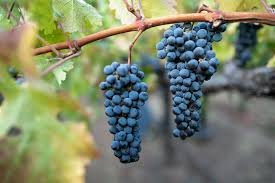
Bordeaux holds the prestigious distinction of being the most valuable appellation in France, also producing the largest volume of wine in the country. The region is known for its invaluable red blends that are passionately chased by wine collectors and connoisseurs. However, Bordeaux also produces good quality wines at every price point, offering great value for money to every type of buyer.
The reason why this region is able to produce such fantastic wines is its geographical location and climate whose unpredictability has played a crucial role in escalating prices of wines from certain vintages. This along with the care and precision put by winemakers of the region, who take immense pride in their legacy, is what truly makes Bordeaux a unique and invaluable wine region.
Geography and Climate
Bordeaux is located in south western France, with the Gironde Estuary cutting through the region to divide it into two distinct and important wine regions- the Left Bank and the Right Bank. The Left Bank has renowned appellations of Médoc, Graves and Sauternes while popular regions on the Right Bank are Saint-Émilion and Pomerol. In total, there are 50 different appellations in the Bordeaux wine region, which vary in terms of size and the quality of wine produced.
The wine region experiences a moderate maritime climate, influenced by the nearby Gulf Stream. The warm ocean current from the stream gives the region an extended growing season which stretches well into October. While the current also protects the region from spring frost, it also brings a high level of humidity and rainfall. There is no particular season for rain in the region as it is a year-round phenomenon and this has a huge impact on the vineyards. Excess rainfall at different stages of the grape growing season can affect flowering and fruit set, promote rot or dilute flavours in the fruit.
This results in variation across vintages which influences the evaluation of a wine. Wines from superior vintages like 1982, 1989 or 1990 command a super-premium price. On the other hand, a bad vintage won’t have many takers. For instance, 2012 was such a bad vintage that premier dessert wine producer, Château d’Yquem announced that they wouldn’t be making any wine from the year’s harvest. However, many reputed producers can still reduce the difference in style and quality of the wine by rejecting unripe or unhealthy grapes.
Style and Grape Varieties

Most red and white wines made in the regions are produced by blending different grape varieties. The winemakers adopted the tradition of growing multiple grape varieties to reduce their reliance on a single grape as the weather in the region is highly unpredictable. Since different varieties ripen at different times of the harvesting period, poor weather conditions such as incessant rainfall or frost wouldn’t spoil the entire harvest.
Black wine grapes
The key black wine grape varieties of this region are Cabernet Sauvignon,Cabernet Franc , Merlot and Petit Verdot. Cabernet Sauvignon produces some of its finest expressions on the Left Bank, notably in Médoc AOC and Haut-Médoc AOC. The wine has intense flavours of black fruits like plums, black cherry and blackberry, along with notes of star anise, tobacco and liquorice. The full-bodied wines have firm acidity and high tannins. It is often matured in oak barrels for several months which helps soften the tannins.
Merlot is the most widely planted grape variety in Bordeaux, typically reining on the Right Bank. Some of the finest expressions of the variety come from Saint-Emilion and Pomerol, which are known for their timeless elegance.
Oak maturation is a common practice among red blend makers. The best chateaux mature their red wines in new casks, meanwhile, the producers who do not enjoy as much prominence or affluence use a mix of old and new casks, with the former making up for a larger part of the number. Although generic wines from the regions rarely undergo oak maturation.
White wine grapes
Prominent white wine grape varieties from the region are Semillon, Sauvignon Blanc and Muscadelle. The production of these wines ranges from everyday-drinking pocket-friendly wines that have fresh fruity flavours and lively acidity, to premium wines with nuanced flavours from oak ageing.
Sweet wines
Bordeaux is known to produce high-quality sweet wines from grapes affected by a fungus called Bortrytis Cinerea also known as the noble rot. The preferred grape variety for premium sweet wines coming from the region is Semillon, due to its thin skin and affinity for Botrytis. The best wines in this category come from the appellation of Sauternes, which have high levels of sugar, acidity and alcohol and heady aromas of apricot and citrus peel. The wines also gain notes of toast and vanilla from oak fermentation or maturation.
Give your wine career a confident start with world-class wine education. Enrol for the WSET Level 3 Award in Wines at the Sonal Holland Wine Academy and let our qualified wine educators guide you on this amazing educational endeavour. Click here to know more about our upcoming batches.
